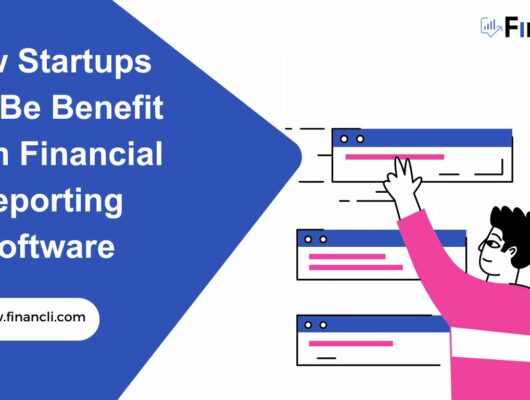
The post-pandemic world is more business-oriented. People prefer to own businesses instead of searching for employment opportunities. While this hands over more control to individuals, it also has associated risks of failure or loss, especially since most business owners need to familiarize themselves with accounting and financial management dynamics.
Thankfully, financial planning software solves the problem. Apart from streamlining daily operations through data compilation and analysis, financial planning software, directly and indirectly, contributes to business growth too.
1. Enabling Smarter Finance Allocation

Financial planning software’s primary functions are budgeting, finance management, and analysis of income and cash flow statements. However, these direct functions have a consequential impact on overall business growth.
Budgeting is critical for better financial planning and management for households and industries. Any business that foresees expansion and growth begins by managing its money better and investing in the right direction.
Financial planning software offers just that. More intelligent budget allocation allows companies to save substantial amounts of money that are later invested in areas that contribute to business growth.
Additionally, by analyzing their cash flow and income statements, stakeholders and decision-makers can understand their current financial position and spending patterns and make any necessary adjustments.
2. Improving Financial Management

Intelligent financial planning software allows users to track their expenses. Real-time insight into business spending directly impacts business growth.
Making accurate decisions at the right time enables companies to grow and flourish. However, these decisions are effective only when facts and ground realities drive them. Decision makers analyze what is, how it can be better, and then execute it for improvement.
Financial planning software provides a review of current expenses by an organization. It can help stakeholders review whether these expenses are yielding the desired results. If yes, all is good. If not, adjustments and amendments are so that they directly impact business health and growth.
It employs predictive analysis and historical data to generate revenue, expenses, and cash flow projections. This enables businesses to make data-driven decisions and plan for various scenarios, such as market fluctuations or changes in customer demand.
Furthermore, businesses can monitor their financial performance in real time and adjust their budgets and forecasts as needed.
3. Accomplishing Financial Goals

All companies have financial goals. The core function of financial goals is to help a business grow or reach the top of the market. Any growing business must set financial goals and track progress toward these objectives. Organizations develop a roadmap that will lead them to growth and success.
Financial planning software allows businesses to define their goals, such as increasing revenue and monitor their progress in real-time. This helps companies to stay focused on their growth strategies and adjust to achieve their targets. For instance, a business aims to reduce its expenses or increase sales.
A constant knowledge of money matters helps businesses align with their goals. In addition, decision-makers can use the data of financial planning software to make crucial decisions and analyze whether their purposes are practical.
By tracking their financial KPIs, businesses can review their financial performance and identify areas where they may need more time, effort, or resources. This ensures that companies are on the right growth path and can make data-driven decisions to accelerate their success.
4. Proactive Forecasting

Being prepared for different scenarios can help businesses navigate challenges and capitalize on opportunities. Financial planning software enables enterprises to conduct scenario analyses and stress tests, simulating the impact of various variables or decisions on their financial health.
For example, a business could use financial planning software to model the effects of a sudden increase in production costs, a decline in sales, or changes in exchange rates. By understanding the potential consequences of these scenarios, businesses can devise contingency plans and make more strategic decisions.
Financial forecasting can help businesses identify areas with the highest growth potential by analyzing past performance and extrapolating trends into the future so companies prioritize their efforts and resources on opportunities to deliver the most significant returns.
Financial forecasting software allows businesses to analyze sensitivity by adjusting various assumptions and inputs, such as market conditions or pricing strategies. This helps companies to understand the potential impact of different scenarios on their growth trajectory, allowing them to make more informed strategic decisions.
Financial forecasting equips businesses to quickly adjust strategies on the basis of new information or market conditions. Increased agility helps companies better navigate uncertainties and capitalize on emerging opportunities, which is essential for sustained growth.
5. Maintaining Financial Stability

Healthy cash flow is essential for any growing business. Financial planning software helps businesses manage their cash flow by tracking income, expenses, receivables, and payables. This provides a comprehensive view of the company’s financial health, allowing businesses to identify trends, maintain adequate cash reserves, and avoid potential cash flow problems.
By closely monitoring cash flow, businesses can prioritize payments, negotiate better payment terms with vendors, and optimize their working capital. The software can also send alerts for upcoming payment deadlines or potential cash flow issues, helping businesses manage their finances and ensure financial stability.
Furthermore, financial planning software for small businesses allows them them to monitor their financial performance in real-time and adjust their budgets and forecasts as needed, enabling them to adapt to current financial circumstances and maintain their financial stability.
Financial planning software can help businesses identify and manage financial risks that may threaten their stability. These risks may include credit, liquidity, market, or operational risks.
By monitoring these risks and implementing strategies to address them, businesses can protect their financial health and continue to grow without unnecessary setbacks.
Financial planning software enables businesses to conduct in-depth financial analysis, helping them identify strengths, weaknesses, and areas for improvement in their financial performance. By tracking KPIs and generating reports and visualizations, businesses can look into their financial health, contributing to financial stability.
Monitoring financial performance allows businesses to address declining profitability or increasing expenses. By taking corrective action quickly, companies can maintain financial stability and continue growing.
6. Acquire Valuable Insights

Financial planning software has advanced analytics capabilities that allow businesses to analyze their financial data in-depth. By generating reports and visualizations, these tools can help enterprises to identify strengths, weaknesses, and areas for improvement in their financial performance.
Financial planning software can analyze critical metrics such as profitability, liquidity, efficiency, and solvency ratios. By understanding these metrics, businesses can make more informed decisions, implement targeted strategies, and improve their financial health.
Additionally, financial analysis allows businesses to compare their performance with industry standards and competitors through benchmarking. This comparison helps companies identify improvement areas and adopt best practices to stay competitive and drive growth.
It also provides valuable information for decision-making, such as evaluating investment opportunities, determining pricing strategies, and selecting the best financing options, contributing to the efficient allocation of resources and business growth.
Businesses can identify potential risks and vulnerabilities by analyzing financial data, such as excessive debt or cash flow issues. Early identification of risks enables proactive risk management, ensuring business stability and growth.
Financial analysis can also reveal inefficiencies in business processes, allowing companies to see where they can reduce costs and improve productivity. Increased operational efficiency leads to profitability and supports business growth.
7. Saving Time and Money
Financial planning software can save users time and money, contributing to business growth. In addition, by streamlining and automating financial processes, the software reduces the amount of manual labor and potential errors associated with financial management.
This efficiency saves time, allowing business owners and employees to focus on other aspects of the business, such as marketing, product development, and customer service.
Moreover, financial planning software can reduce the risk of human errors, such as data entry or calculation errors, which can significantly affect a business’s financial health.
8. Following Compliance and Regulations

Financial planning software can help businesses comply with regulations and manage financial risks more effectively. Businesses can ensure that they meet their legal obligations and avoid potential financial penalties by automating tasks such as tax calculations and regulatory reporting.
Compliance with financial regulations is essential for businesses, as not doing so can result in fines, penalties, and reputational damage. By helping businesses maintain compliance, financial planning software reduces the risk of these negative consequences and safeguards the company’s financial health.
Consequently, these benefits contribute to business growth by preventing financial setbacks and preserving the company’s reputation, which is critical for attracting and retaining customers, partners, and investors.
9. Ensuring Seamless Operations

Many financial planning software solutions efficiently integrate with other business software, such as Enterprise Resource Planning (ERP) and Customer Relationship Management (CRM) systems. These provide data sharing and streamlined operations, improving overall business performance.
For example, integrating financial planning software with a CRM system can help businesses better understand customer spending patterns and identify opportunities for upselling or cross-selling. Similarly, integrating financial planning software with an ERP system can improve inventory management and optimize the supply chain, resulting in cost savings and increased efficiency.
10. Promoting a Unified Approach

Financial planning software promotes collaboration and communication among team members, ensuring all the team is on the same page. In addition, these tools often provide features such as file sharing, version control, and real-time updates, which make it easier for teams to collaborate on financial planning tasks, share insights, and make collective decisions.
A unified approach to financial planning can lead to better decision-making, as it ensures that all stakeholders have access to the same information and can provide their input. This creates a more cohesive and efficient financial management process, ultimately contributing to business growth.
Effective collaboration can lead to better strategic planning, as employees and managers can work together to analyze financial data, identify trends, and discuss potential courses of action.
When team members have access to the same financial information, they can develop a shared understanding of the company’s financial position, which enables them to make collective decisions that drive growth.
Sharing and collaboration options also streamline the financial planning and reporting process, reducing the time and effort required to gather, compile, and disseminate financial information. This efficiency allows employees to focus on more value-added tasks, such as identifying new growth opportunities or optimizing existing processes, which can ultimately contribute to business growth.
Moreover, collaboration options can help improve stakeholder relations by allowing businesses to share financial reports and updates with investors, lenders, and other stakeholders.
Transparent communication and easy access to financial data can build trust and confidence in the company’s financial management, which may lead to increased stakeholder investment or support.
The Bottom Line
Financial planning software is a powerful tool that can help businesses grow by providing them with the insights, automation, and collaboration capabilities they need to manage their finances effectively. Financial planning software can catalyze business growth by streamlining financial processes, enabling data-driven decision-making, and promoting a unified approach to financial management.
By investing in financial planning software, businesses can save time and resources and gain a competitive edge in today’s dynamic business landscape. Financli is the right financial planning software with which businesses can unlock new opportunities for growth and build a strong foundation for long-term success. Contact us now to learn more and have your financial planning software today.






